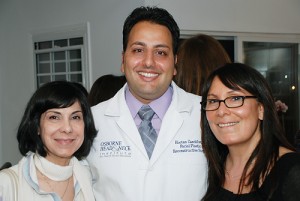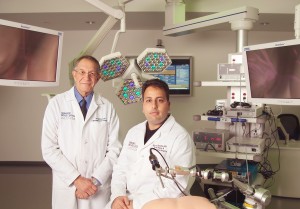- Folded Ear in Newborns: Treatment Options - April 11, 2018
- Newborn Ear Deformity: What Can Be Done? - April 11, 2018
- Ear Molding: An Overview - November 2, 2017
- Otoplasty for Protruding Ears - September 26, 2017
- Basal Cell Carcinoma: Facial Reconstruction Timing - September 26, 2017
- Clinical Considerations of Mohs Reconstruction of Cheek Defect - September 26, 2017
- Basal Cell Carcinoma: Nasal Bridge Reconstruction - September 26, 2017
- Skin Cancers Involving the Eyebrow: Clinical Considerations - October 3, 2016
- Treatment of Multiple Skin Cancer Lesions - June 1, 2016
- Skin Cancer: Nasal Reconstruction and Scar Management - June 1, 2016
This is the first installment of a series of articles about beneficial skin care regimes presented by Facial Plastic Surgeon Dr. Hootan Zandifar, of the Facial Plastic & Reconstructive Surgery division of the Osborne Head & Neck Institute.
As the summer comes to an end, so will the long days under the sun. While the beachgoers bathe in large numbers for that desirable tan, changes to their skin can put their lives at danger. Cases of skin cancer have been on the rise for the past few decades and multiple studies have linked this to the amount of lifetime sun exposure. “Tanning is essentially the skin’s response to direct damage from the sun’s harmful rays” says Dr. Hootan Zandifar Director of Skin Center at Osborne Head and Neck Institute. “There are, however, several steps that can be taken to decrease the likelihood of getting skin cancer and still enjoy your time in the sun.”
Here are a few of these recommendations.
Avoidance of Sun Exposure
This is basically a sure way of avoiding sun damage. However, this doesn’t mean you should live at night and sleep during the day. It just means you should avoid unnecessary sun exposure. Wearing a hat or protective clothing is one way of ensuring healthy skin during summer days.
Other ways to avoid sun exposure is to opt for a spray tan instead of sun bathing or tanning beds, both of which increase the risk of skin cancer. Although the results of spray tans are temporary they tend to look natural and have no known risks. However, avoidance is not always a feasible option. Therefore, other preventive measures can and should be employed.
Sunscreens/Sun blocks
Sunscreens have been dubbed “The fountain of youth” and rightfully so. Properly selected and daily used sunscreens can prevent aging of the skin as well as protect the skin against skin cancer. There are many sunscreens available so it is important to understand the differences. Several medical grade sunscreens can be purchased through our office.
How to choose a correct sun block
There are 2 types of sun’s ultra violet (UV) rays: UV A and UV B. Historically, UV B rays had been linked to skin redness, sunburns and skin cancers. However recently, UV A rays have been shown to be associated with
sunspots, aging as well as skin cancers. Eventhough, earlier sunscreens protected against UV B rays only, the newer ones on the market protect against both rays. It is important to choose a sun block that offers protection
for both of these damaging rays.

Sunburn Protection Factor (SPF)
SPF numbers found on the sunscreens are a great way of knowing the amount of protection that your skin can have. The SPF number is essentially the amount of protection in minutes that your skin is obtaining. For example, SPF 30 allows your skin to have the same amount of UV damage in 30 minutes that it would get without sun protection in 1 minute.
Remember that no sun block is able to block all of the sun’s radiation.
Proper Use of sun blocks
- Apply about 1 ounce of sun block thirty minutes before sun exposure
- Remember to re-apply every 2 hours or after swimming, showering or
- sweating excessively
- You should apply daily and even on cloudy days as the sun’s UV rays can
- penetrate the cloud layers
- Apply in all people ages 6 months and up
The type of sun block you should use depends on your skin type and amount of sun exposure. For day-to-day use, an SPF of 15 is sufficient. If prolonged exposure to sun is expected, higher SPF’s are recommended.
Sun blocks and cancer
Recent news that certain materials in sun blocks have been shown to cause cancer themselves has clouded the discussion on daily sun block use. It is important to note that most materials in sun blocks are safe and have a long track record. Recently, an ingredient called Retinyl Palmitate (combination of Vitamin A and Palmitic acid) has been linked to increase cases of skin cancer. Dr. Zandifar suggests using natural sun blocks that contain combination of Zinc Oxide and Titanium Dioxide. “They tend to be non-irritating and offer some of the best sun protection amongst the various materials that are out there.”
Lotions and Creams
There are also some newer lotions and creams that are mostly available through the physicians’ office that offer additional protection to the skin. “Some anti-oxidant creams have been shown to decrease the formation of free-radical and other harmful products that are produced in the skin after sun exposure” says Dr. Zandifar. These and other products in development, should provide a new hope in our combat with skin cancer.
For more information on skin cancer and skin cancer prevention visit www.ohniskin.com.
Contact a Physician at Osborne Head & Neck Institute
If you would like to speak with one of our physicians regarding this issue or another ear, nose, throat problem; or have other questions or concerns, please complete the contact form below or call us at 310-657-0123.



